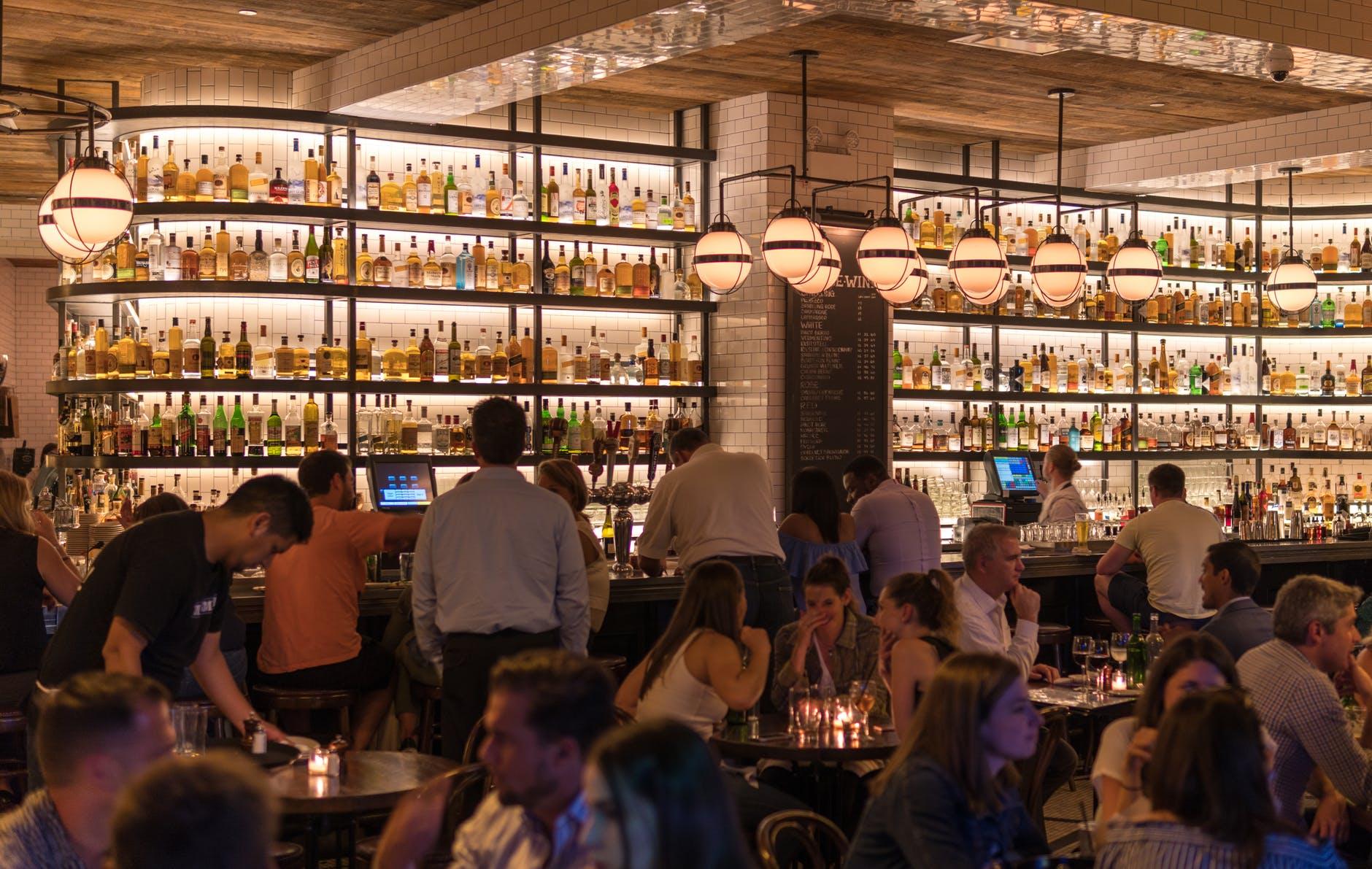
Cash Flow Problems Could Kill a Profitable Company: Home Depot 1985 Case Study
July 20, 2020
Profit First Bookkeeping for Retail Stores
November 24, 2020As a restaurant owner, you’re responsible for everything. Your task is to make sure the meals are delicious, the service is superb and finances are in check. On top of this, you’re always looking for improvements that would make your business more profitable. Therefore, we have one interesting method to suggest–the Profit First formula that could transform your restaurant business.
What Is Profit First?
The concept of Profit First is introduced by Mike Michalowicz. He argues that restaurant owners need to start prioritizing profit if they want to become more successful.
Usually, profit is something that comes after all the expenses and liabilities are covered. The standard accounting formula is:
Sales – Expenses = Profit
Michalowicz thinks that this formula makes the profit a leftover resource. Sometimes it’s there, but often, the profit is either small or non-existent. The expenses just pile up and you only get scraps. That’s why he’s suggesting a new formula:
Sales – Profit = Expenses
When you use this formula, you immediately determine what your minimum profit will be. Set aside a predetermined percentage of your sales and transfer it to a separate account. Only after this amount is transferred should you focus on covering your business expenses.
Undoubtedly, this method will force you to work with smaller amounts of money to cover expenses. With proper budgeting, you’ll avoid unnecessary purchases and think of more affordable alternatives. This unique take on managing finances could change the way the restaurant industry works.
If you have money left over after covering expenses in addition to the profit you set aside, you have a couple of options. Foremost, you could use that money for new investments in the restaurant or leave it for next month’s emergencies. This money could also be added to your salary.
Managing Restaurant Finances
The Profit First method offers a refreshing view on business finances. Before you try this method, you should learn more about managing restaurant finances. Unless you’re a trained accountant, you could use the help of a professional.
How to Budget Your Expenses?
The best way to cover your expenses on time is to set a clear budget in advance. Proper budgeting will ensure that all your expenses and liabilities are covered. You should have a clear picture of your fixed costs and working expenses. Sure, there’ll always be new and unexpected situations that arise, but with proper budgeting, you’ll know how to respond to them.
Consider downloading an accounting software that both you and your accountant could use. Your role is to monitor, observe, and make sure there aren’t any mistakes in the financial reports. You’ll have an easier time tracking this if you use proper accounting tools.
Prepare For Known Expenses
Although you can’t predict your sales numbers or unexpected costs, there are some fixed expenses you should prioritize in your budget planning. Make sure you can cover priority expenses like rent, ingredients, utilities, and labor costs. This is the minimum effort necessary to keep your business afloat. Only after you’ve covered the essentials, you should move on to other expenses.
Tips To Keep Expenses Under Control
If you want to keep your expenses in check, you should:
- Design the right menu. Try to calculate the cost of each dish and price it accordingly. While you do this, keep in mind your desired profit margin.
- Control the inventory and keep raw ingredients in check. The waste (and theft) of ingredients should be minimal or non-existent.
- Track the prices. Don’t rely only on one supplier; that way, you can compare prices of meat, vegetables, fruits, and other raw ingredients.
- Keep your employees happy. If your best chefs and servers quit, the cost of replacing them will be very high.
Common Restaurant Financial Mistakes and Accounting Problems
The restaurant industry’s profit margin is tight – between 2 and 6%. However, with the Profit First method, the target profitability could be between 5 and 20%. If you avoid the common mistakes in the restaurant industry and fix the problems at the very start, your profit margin could be much higher.
Poor Finance Control
If you don’t have the right accounting and finance system, you won’t see where your money is going. Keeping your finances under control will help you notice red flags and fix the money problems as they appear. The best way to achieve this is to work together with your accountant. Read daily and monthly reports carefully to get insightful ideas about new improvements and cost reduction.
Also, keeping an eye on your finances will catch any errors your employees might make. Mistakes tend to happen a lot, and often they’re unintentional. Sometimes a gift card isn’t recorded properly or your promotional discount doesn’t go through as planned. However, you need to carefully monitor and fix the errors before they affect your finance negatively.
Overstock Food and Beverage Inventory
Overstocking can lead to excessive food waste and lower cash flow. You should do a regular inventory check, probably on a weekly basis. This will allow you to monitor which ingredients are about to expire, what is always lacking, etc. Also, don’t keep more than a week’s worth of ingredients in stock.
Doing regular inventory checks will establish inventory accountability. Your employees will become more careful with usage of ingredients and other stocked items. For example, they won’t waste food unnecessarily by inadequately portioning meals. Besides detecting excess waste, you’ll be able to keep an eye out on food theft. If you’re not careful with supplies management, your operating costs will be higher than you imagined.
When to Seek an Accounting Expert?
Don’t wait to run into financial problems before you hire an accountant. You will require accounting services from the get go. An accounting expert will free you from financial analysis and complicated daily tasks. This will give you more time and information to make smart decisions about your restaurant.
Do you really want to spend your precious time doing bookkeeping, cost analysis, managing payroll, filing taxes, recording sales, making reports, and other draining activities? You opened a restaurant because of your love of food and service, not because you love doing paperwork! Leave finances to the experts and only monitor the process. This way you can make daily improvements and boost your profits.
What Are the Challenges for Restaurant Owners?
Having Financial Support in the Initial Years
The first challenge every restaurant owner faces is finding the right financial sources. You need capital to support the process of opening and running a restaurant. Having a financial safety net before hitting the wanted profit margins is crucial for increasing the chances of success.
The best way to secure financial support is by planning in advance. The minimal amount of money you need is the cost of opening a restaurant combined with the operating costs for the first year. Searching for the capital might be a bit difficult. If you don’t have enough personal savings, try to get the money from other sources like government and corporate programs, bank loans, investors, and etc.
Choosing the Staff
Your employees are the pillars of your business. They’re in direct contact with the customers, making and delivering meals. It’s crucial to have employees with great experience and knowledge, so they can provide quality service.
Finding and training staff is difficult and costly. Once you find good employees, make sure they stay at your restaurant long-term. Motivate them with pay bonuses, gift cards, and other rewards for a job well done.
Also, you need a good team, especially for the popular restaurant season like the summertime. Hire additional seasonal staff when business grows to lessen the workload of your regular employees so that they can provide better service.
Note that you should also carefully choose your managers. Set high criteria, because good management can save you a lot of money. For example, with better shift management for service staff, you’ll avoid paying overtime.
Keeping up With the Latest Trends
The restaurant business is changing fast, and you should be up-to-date with business, food and technology trends in order to attract new customers. The newest technology is often very helpful and cost-efficient. There are many software programs that can track trends and demographics, so you know what your customers want and expect to get.
Indeed, new technology can increase your revenue and lower your costs, because the service will be faster and more efficient. Technology is also useful in marketing. Nowadays people check the restaurant online before they decide to dine in-person, so if you stay behind the trends, you could lose a lot of business.
How Much Could Restaurant Owners Make?
This is a tricky question to answer. Some restaurant owners earn as little as $30,000 annually, while others are rocking in $150,000 per year. If you want to know what your salary will be, try calculating your profit margin first. Your earnings will amount to the money from the revenue that’s not used for operating expenses.
The Profit First model aims to provide profits that are 20-55% of revenue after food costs. While your salary may be different every month, you’ll know what is a consistent minimum you can count on. You could use excessive profits for paying back debt or non-essential upgrades for the restaurant like marketing campaigns, new equipment, and other related expenses. Ultimately, it’s up to you to invest financially as you like.
Profit First — the Perfect Way to Make Your Restaurant Work for You
The restaurant industry isn’t a forgiving one. You must bring your A-game when you enter the world of serious restaurant entrepreneurs. Be careful about your financial decisions and don’t ever take your mind off the profit margin you want to generate. Profit First will help you set clear goals that you can aim towards. Be that 1% or 10% of your revenue, the most important thing is to start and keep going!







